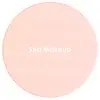What's inside
What's inside
 Key Ingredients
Key Ingredients

 Benefits
Benefits

 Concerns
Concerns

 Ingredients Side-by-side
Ingredients Side-by-side

Talc
AbrasiveSilica
AbrasiveCetyl Ethylhexanoate
EmollientBoron Nitride
AbsorbentNylon-12
Triethoxycaprylylsilane
Salicylic Acid
MaskingWater
Skin ConditioningPhenoxyethanol
Preservative1,2-Hexanediol
Skin ConditioningEthylhexylglycerin
Skin ConditioningMethylpropanediol
SolventHamamelis Virginiana Extract
AntiseborrhoeicHydroxyacetophenone
AntioxidantHexylene Glycol
EmulsifyingMica
Cosmetic ColorantSynthetic Fluorphlogopite
Dimethicone
EmollientSilica
AbrasiveCaprylic/Capric Triglyceride
MaskingMagnesium Stearate
Cosmetic ColorantBoron Nitride
AbsorbentPhenoxyethanol
PreservativeParfum
MaskingCentella Asiatica Leaf Extract
Skin ConditioningEthylhexylglycerin
Skin ConditioningWater
Skin ConditioningButylene Glycol
HumectantCeramide EOP
Skin ConditioningGlycerin
HumectantLactobacillus/Soybean Ferment Extract
Skin ConditioningViscum Album Leaf Extract
SoothingImperata Cylindrica Root Extract
Skin ConditioningMica, Synthetic Fluorphlogopite, Dimethicone, Silica, Caprylic/Capric Triglyceride, Magnesium Stearate, Boron Nitride, Phenoxyethanol, Parfum, Centella Asiatica Leaf Extract, Ethylhexylglycerin, Water, Butylene Glycol, Ceramide EOP, Glycerin, Lactobacillus/Soybean Ferment Extract, Viscum Album Leaf Extract, Imperata Cylindrica Root Extract
Ingredients Explained
These ingredients are found in both products.
Ingredients higher up in an ingredient list are typically present in a larger amount.
Boron Nitride is compound consisting of boron and nitrogen. It is used to absorb oil and modify adherence/ slip in products.
This means it is often used in makeup products to help them last longer.
Ethylhexylglycerin (we can't pronounce this either) is commonly used as a preservative and skin softener. It is derived from glyceryl.
You might see Ethylhexylglycerin often paired with other preservatives such as phenoxyethanol. Ethylhexylglycerin has been found to increase the effectiveness of these other preservatives.
Phenoxyethanol is a preservative that has germicide, antimicrobial, and aromatic properties. Studies show that phenoxyethanol can prevent microbial growth. By itself, it has a scent that is similar to that of a rose.
It's often used in formulations along with Caprylyl Glycol to preserve the shelf life of products.
Silica, also known as silicon dioxide, is a naturally occurring mineral. It is used as a fine, spherical, and porous powder in cosmetics.
Though it has exfoliant properties, the function of silica varies depending on the product.
The unique structure of silica enhances the spreadability and adds smoothness, making it a great texture enhancer.
It is also used as an active carrier, emulsifier, and mattifier due to its ability to absorb excess oil.
In some products, tiny microneedles called spicules are made from silica or hydrolyzed sponge. When you rub them in, they lightly polish away dead skin layers and enhance the penetration of active ingredients.
Learn more about SilicaWater. It's the most common cosmetic ingredient of all. You'll usually see it at the top of ingredient lists, meaning that it makes up the largest part of the product.
So why is it so popular? Water most often acts as a solvent - this means that it helps dissolve other ingredients into the formulation.
You'll also recognize water as that liquid we all need to stay alive. If you see this, drink a glass of water. Stay hydrated!
Learn more about Water